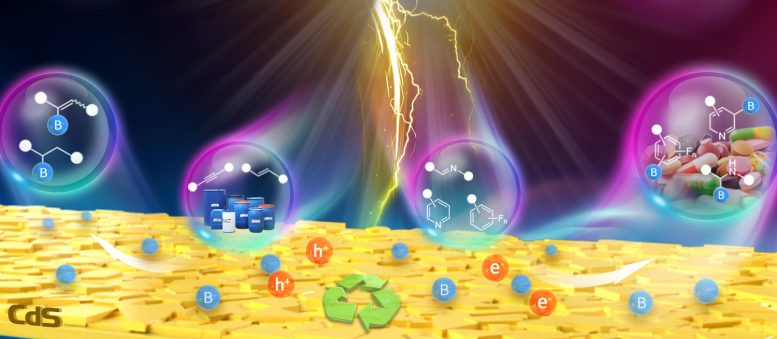New Chemical Synthesis Revolution: Photocatalytic Borylation Method Unleashes Green Chemistry

An innovative research team has released a study detailing a highly efficient, recyclable photocatalytic system that enables borylation reactions by using NHC-BH3. This paves the way for sustainable, high-value chemical syntheses under mild conditions. The credit for this breakthrough goes to DICP.
The study was carried out under the leadership of Professor Dai Wen from the Dalian Institute of Chemical Physics, which is a subsidiary of the Chinese Academy of Sciences. The team managed to accomplish borylation reactions by leveraging N-heterocyclic carbene boranes (NHC-BH3), and a simple yet premier heterogeneous photocatalytic system. This methodology allowed the generation of high-value chemical transformations - primarily hydroboration and boron substitution products.
The research findings have been published in the Angewandte Chemie International Edition Journal.
NHC-BH3 is considered a fresh source of boron for free radical borylation reactions due to their stable chemical properties and easy preparation method. However, the use of NHC-BH3 is restricted by the need for a large quantity of harmful free radical initiators, in addition to expensive and non-recyclable homogeneous photocatalysts.
In this study, the team made use of cadmium sulfide nanosheets as heterogeneous photocatalysts. The nanosheets were easily prepared and served NHC-BH3 as a boron source, which allowed for the selective borylation reaction of various alkenes, alkynes, imines, aromatic (hetero) rings, and bioactive molecules under room temperature and light conditions. What's more, as the conversion process harnessed photogenerated electron-hole pairs fully, there was no need for sacrificial agents.
Further investigation revealed that the photocatalytic system not only made gram-scale scale-up possible but also kept a stable yield even after multiple cycles of the catalyst. The system serves as a recyclable general platform: the recovered catalyst can be used to catalyze various substrates.
Prof. Dai noted, "Our study puts forth new ideas for the development of free radical borylation reactions using NHC-BH3 as a boron source. The organoboranes derived through this reaction can be used to create synthetic building blocks comprising hydroxyl, borate, and difluoroborane reactive sites."




